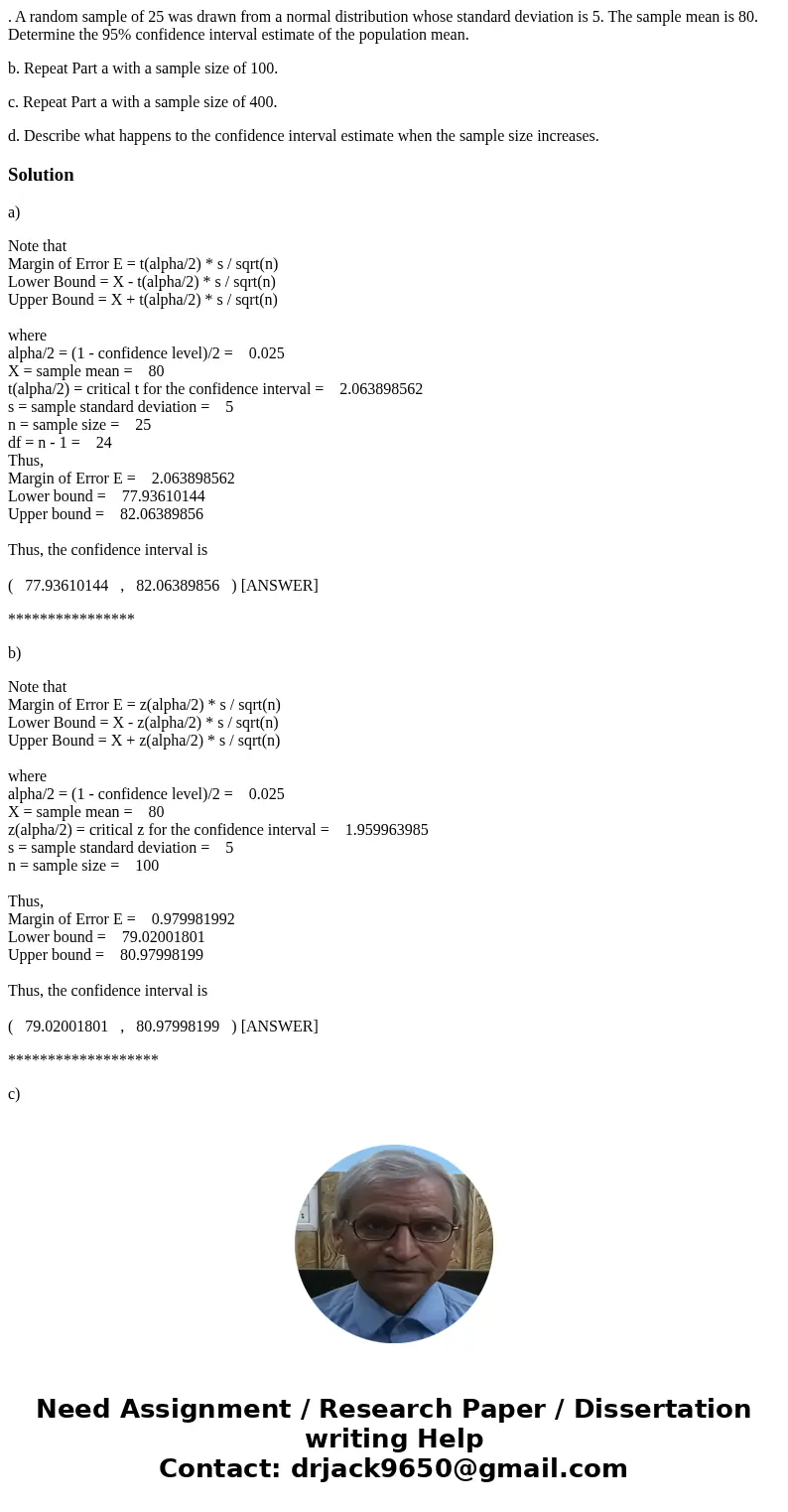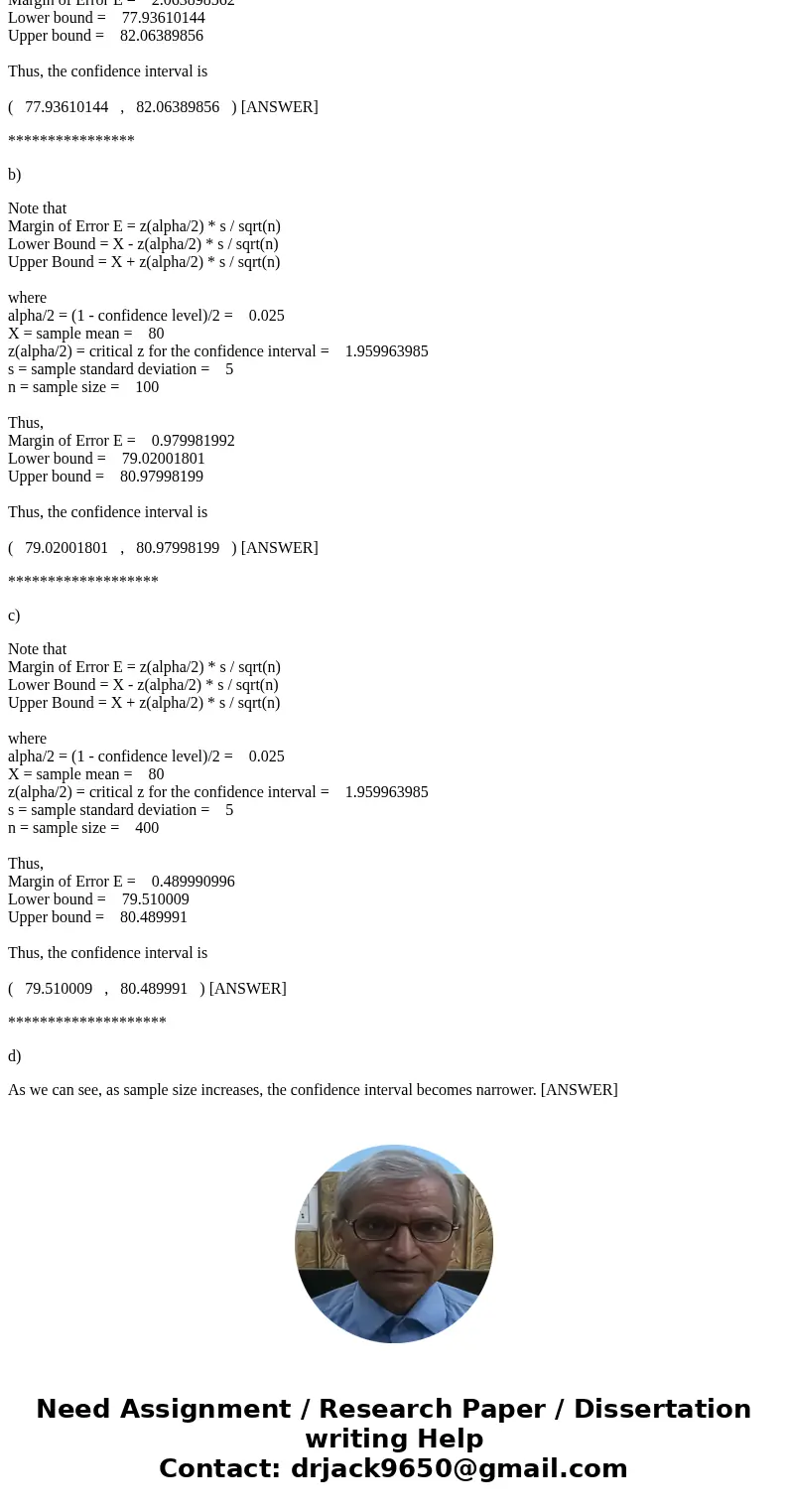A random sample of 25 was drawn from a normal distribution
. A random sample of 25 was drawn from a normal distribution whose standard deviation is 5. The sample mean is 80. Determine the 95% confidence interval estimate of the population mean.
b. Repeat Part a with a sample size of 100.
c. Repeat Part a with a sample size of 400.
d. Describe what happens to the confidence interval estimate when the sample size increases.
Solution
a)
Note that
Margin of Error E = t(alpha/2) * s / sqrt(n)
Lower Bound = X - t(alpha/2) * s / sqrt(n)
Upper Bound = X + t(alpha/2) * s / sqrt(n)
where
alpha/2 = (1 - confidence level)/2 = 0.025
X = sample mean = 80
t(alpha/2) = critical t for the confidence interval = 2.063898562
s = sample standard deviation = 5
n = sample size = 25
df = n - 1 = 24
Thus,
Margin of Error E = 2.063898562
Lower bound = 77.93610144
Upper bound = 82.06389856
Thus, the confidence interval is
( 77.93610144 , 82.06389856 ) [ANSWER]
****************
b)
Note that
Margin of Error E = z(alpha/2) * s / sqrt(n)
Lower Bound = X - z(alpha/2) * s / sqrt(n)
Upper Bound = X + z(alpha/2) * s / sqrt(n)
where
alpha/2 = (1 - confidence level)/2 = 0.025
X = sample mean = 80
z(alpha/2) = critical z for the confidence interval = 1.959963985
s = sample standard deviation = 5
n = sample size = 100
Thus,
Margin of Error E = 0.979981992
Lower bound = 79.02001801
Upper bound = 80.97998199
Thus, the confidence interval is
( 79.02001801 , 80.97998199 ) [ANSWER]
*******************
c)
Note that
Margin of Error E = z(alpha/2) * s / sqrt(n)
Lower Bound = X - z(alpha/2) * s / sqrt(n)
Upper Bound = X + z(alpha/2) * s / sqrt(n)
where
alpha/2 = (1 - confidence level)/2 = 0.025
X = sample mean = 80
z(alpha/2) = critical z for the confidence interval = 1.959963985
s = sample standard deviation = 5
n = sample size = 400
Thus,
Margin of Error E = 0.489990996
Lower bound = 79.510009
Upper bound = 80.489991
Thus, the confidence interval is
( 79.510009 , 80.489991 ) [ANSWER]
********************
d)
As we can see, as sample size increases, the confidence interval becomes narrower. [ANSWER]


 Homework Sourse
Homework Sourse